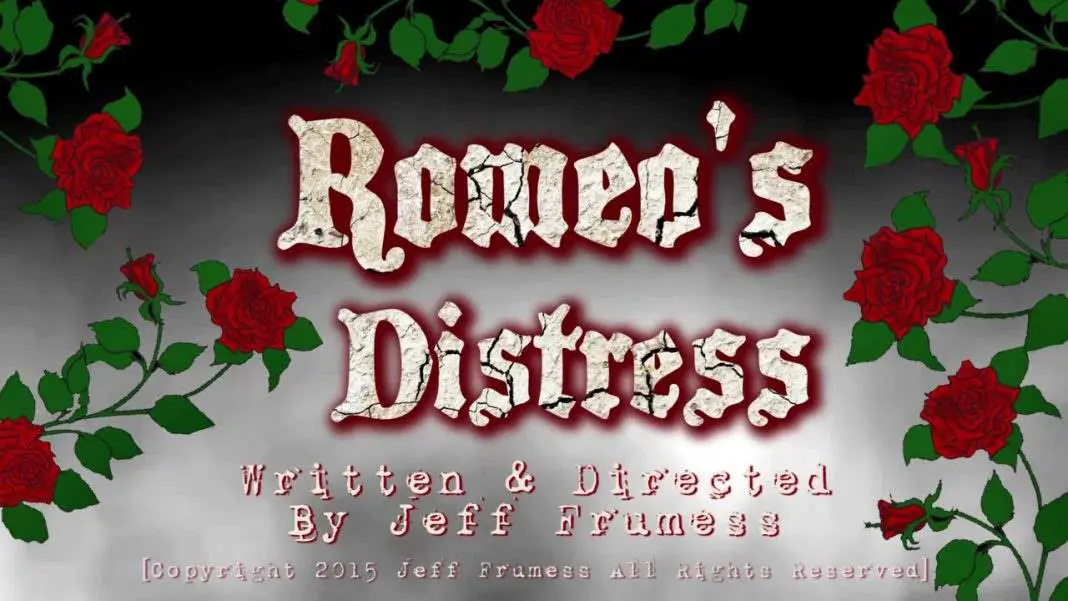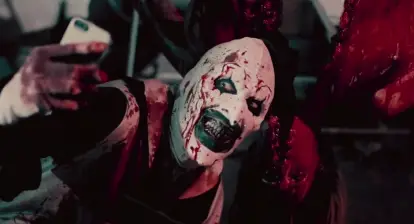Romeo’s Distress is, frankly, the kind of movie I miss getting to see. It’s not something we get much of anymore, which is strange considering the sheer amount of people with camera and minimal equipment trying to make films at the moment. But it’s something we used to get a lot in the ‘80s, a kind of experimental, quirky horror tragedy made devoid of budget and solely for the art.
John Waters is cited as a major influence on Romeo’s Distress and I can certainly see that, but even from the opening moments, the feature struck me as incredibly similar to the films of Jorg Buttgereit. And that was before I even figured out where the plot was heading. But even when I did figure that out, I didn’t find the movie any less engaging.
The story is simple, but it nonetheless unfolds bit by bit as the feature goes on. Basically, a young man has unrequited feelings toward a girl and her father will take drastic, violent means to keep them apart. The small cast and minimalist style are both the right call, as the movie was made for just over $2,000.
Romeo’s Distress reminds me of so many microbudget experimental passion projects, some of which are among my favorite films. It has echoes of George Romero’s Martin, of Nekromantik, Evil Ed, but there’s a flavor to the film that is uniquely its own. There are scenes that go on longer than you’d expect, characters that are weird and uncomfortable for the sake of being weird and uncomfortable.

The major standouts are James, our hero, and the father of the girl he loves. James looks like Fran Kranz but acts like John Amplas and that’s a combination that works much better than you would think. Even if his major strength is just being bizarre and uncomfortable, it’s engaging. The character seems to be half-present in his own narrative, drifting aimlessly in and out of the scene, which only makes sense in the larger context of the story.
And then we have the girl’s father, a much more intense presence in the film, acting like a cross between James Remar and Richard Brake. He comes in late, but adds a menace and energy that the film definitely needed at that point.
Admittedly, I wasn’t always sure while watching that the film needed to be a feature as opposed to simply a short film. I went back and forth on that. The thing that stood out most to me was the reveal at the end. I saw it coming long before we got there and I think it would benefit the film if we found that out earlier on. The film wasn’t any less interesting when I knew where the story was headed and I don’t think it would feel as padded out if that “twist” was moved somewhere toward the middle.
 It’s hard to fault a film for a total lack of budget and I think any more money being put into it would have made this a very different movie. It’s DIY and it feels it and that’s probably what makes it work. Yes, it’s experimental and has virtually no budget, but you have to judge a film like this against films of its type. It stands up well along the likes of Nekromantik and Evil Ed; although it doesn’t go as far with the violence as either of those. It doesn’t have to, though, because it’s all there in the story and the characters.
It’s hard to fault a film for a total lack of budget and I think any more money being put into it would have made this a very different movie. It’s DIY and it feels it and that’s probably what makes it work. Yes, it’s experimental and has virtually no budget, but you have to judge a film like this against films of its type. It stands up well along the likes of Nekromantik and Evil Ed; although it doesn’t go as far with the violence as either of those. It doesn’t have to, though, because it’s all there in the story and the characters.
Romeo’s Distress just had its premiere at the Macabre Faire Film Fest so it’s hard to say when you’ll be able to give it a watch, but it’s definitely something to look out for. If you’re expecting larger, showy, explosive horror fare, then Romeo’s Distress will not be for you. Even if you’re looking for low-budget gore or a dark, Henry-esque character drama, it’s not really either of those things.
In some ways Romeo’s Distress is the very definition of “not for everyone.” But if you like a certain kind of quirky, off-beat no budget passion project, then it may be for you. And I guarantee that if you think it might be for you, it’s one you won’t want to miss.
WICKED RATING: 6.5/10






